Humidity in educational institutions: legal requirements and standards
For our children, we try to choose all the best, high-quality and useful, regardless of their age. But in addition to a healthy diet, developing toys and a decent education, it is necessary to pay attention to their environment. And, if the most basic parameters - temperature and air quality are almost always observed in schools, colleges and kindergartens, then air humidity in educational institutions can not always meet the standards.
But how do you know which indicators are optimal, how to monitor compliance with them and maintain a healthy state of the child at any age?
We will talk about the basic sanitary norms established at the legislative level and share the recommendations of medical workers on how to protect their children as much as possible from an uncomfortable microclimate outside the home.
The content of the article:
Moisture rates in educational institutions
The exact values of the humidity regime in educational institutions are established GOST 30494-2011 “Residential and public buildings. Indoor microclimate parameters. ”
Judging by the table from this document, the facilities for recreation and training should have an optimal air humidity of 45-30%, but it is allowed to increase the set standards to 60%. Moreover, in any institution from a preschool educational complex to high school.
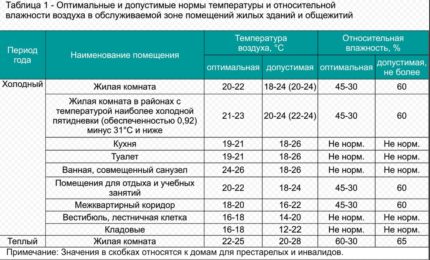
However, everything is not so simple. The parameters of an ideally comfortable environment are built in a complex: humidity + air temperature + air velocity. And only in a single ensemble do they create the necessary microclimate in the room.
But in order to know what it is all about and understand where the humidity comes from, we’ll analyze this moment in more detail.
The concept of relative humidity
So, from the course of physics we know that the subject of conversation can be based on absolute and relative magnitude. True, few people remember what it is and how these two concepts differ from each other.
The air we breathe in and out is a composite puzzle of gases and water vapor. The density of water vapor is the absolute humidity contained in 1 cubic meter. meter of air.
The density of water vapor is calculated by a simple formula:
p = m (steam): v (air)where
m is the mass, and v is the volume of air per 1 cubic meter. m
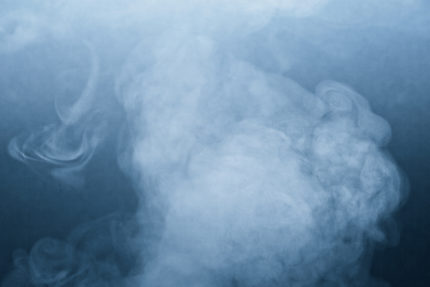
On the one hand, an absolute value should have been enough for a general idea of how much water is contained in the gas we inhale, but in fact, it turned out that organisms perceive it differently, that is, with respect to the possible value of air saturation.
It is calculated by the formula:
φ = (p: pH) x 100%where
p is the density of water vapor, and pH is the density of saturated steam at a given temperature.
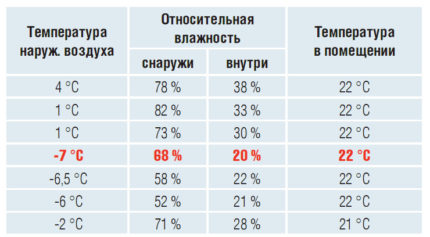
So there was a definition familiar to everyone by ear, which, as we see, is directly related to the ambient temperature and it is the relative humidity in kindergarten, a school and other educational institution is standardized.
Why are humidity standards so important?
In an educational institution, a child spends from 4 to 8 hours a day, and sometimes more. This is enough to ensure that indoor air can affect health.
Reduced moisture contributes to the overdrying of the mucous membranes of the eyes and nose, which means it creates a bridge for viruses and bacteria. In addition, more dust flies in excessively dry air, causing asthmatic attacks and bronchospasm.
In severe cases, dryness of the skin, hair, dehydration of the body, violation of the thermoregulation of the body is manifested.
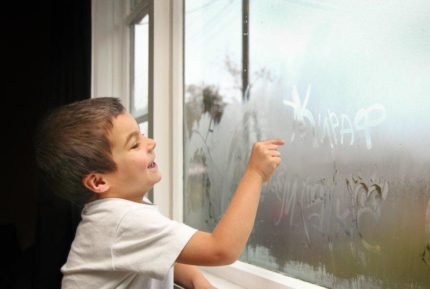
Owing to all these factors, sanitary standards and GOSTs have been developed for the parameters of the relative humidity of the air in buildings for various purposes in educational institutions, as part of a comfortable microclimate.
Methods of measuring air humidity
There are also certain rules for measuring humidity conditions.
Measurements are carried out special devices, hygrometers, in the center of the room at a height of 110 cm from the floor. At the same time, if they are carried out manually, there should be at least 3 control fixations of indications with an interval gap of 5 minutes or more.
If automatic registration occurs - measurements are carried out for 2 hours.
You can also visually identify violations. For example, you can pay attention to the windows. With increased humidity, condensation falls on them, since double-glazed windows are bridges of cold. Accordingly, excess moisture will be indicated mold and drips.
But in general, even without special indicators, moisture or dryness is immediately felt.
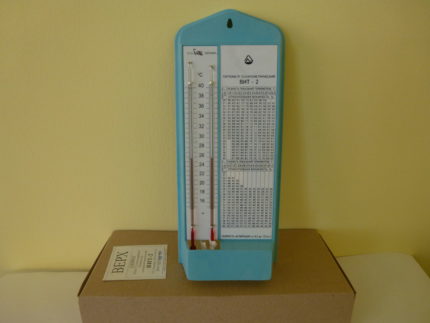
As you can see, the above tables show the optimum and acceptable humidity values. Optimum - 45-30%, the permissible limit is 60%. Why such a scatter?
Optimum moisture indicators represent the most comfortable values for humans, contributing to the best mental and physical performance, completely safe for health and life.
Acceptable indicators - this is the so-called limit, in the state of which there may be slight discomfort and a decrease in working capacity, but at the same time, for any reason - engineering or financial, it is not possible to ensure the optimal mode at the moment or for a long time.
Why is humidity inappropriate?
In educational institutions, they are obliged to strictly monitor the microclimate indicators, especially because children are studying in them and, accordingly, parental supervision is a big question.
Adults are responsible for the children of others - leaders, teachers, educators.

Violations of humidity parameters, as one of the most important parts of the microclimate, are a fairly frequent phenomenon.
Why is this happening? Consider the standard reasons:
- Poor ventilation - due to ventilation pollution, improper construction of the air exchange system or due to its lack of thought in terms of the number of people.
- The heating system does not meet the standards, which provokes increased or decreased dryness.
- Abnormal number of people in the premises, exceeding the established.
- Poor insulation of the building, cracks and other structural defects.
- Emergency engineering communications.
- Violation of sanitary standards in the dining room.
- Problems with proper ventilation.
- The dishonesty of managers, where there is a mechanical motivation in order to save
These and some other reasons contribute to an increase or decrease in humidity.
Let us consider how ventilation is designed in educational institutions and how to achieve optimal microclimate with its help.
Ways to maintain optimal humidity
The microclimate, as already mentioned, consists of several elements and they are closely interconnected. Optimum humidity can be adjusted or ruined by temperature and air exchange.
Consider how things are going with the ventilation of schools and colleges.
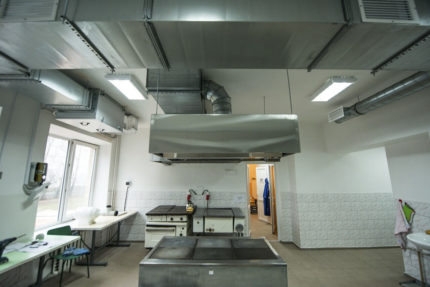
So, the ventilation in the premises is almost always supply and exhaust. Prichochka it is equipped with mechanical motivation in schools where students are more than 200 people and at the same time it is combined with natural in a single air exchange.
Natural ventilation is provided in each room and is carried out by corridors, ventilation.
When air heating equipment is combined with a ventilation system, automatic control is necessarily provided, which allows maintaining the proper temperature conditions from 15 degrees and humidity from 30 to 60% during school hours.
Exhaust ducts, as a rule, are designed from those rooms where there are no window leaves. In almost all rooms, the ventilation sections are not combined.
As a rule, such a scheme of the ventilation system helps to control and eliminate excess / deficiency of humidity parameters.
Of course, it’s very important to monitortemperature level and air exchange, to carry out the ventilation of rooms and inspection of equipment in time, as well as its maintenance.
What to do in case of moisture violation?
If you have noticed in any way that in an educational institution the parameters of the humidity regime are clearly not in compliance with the standards, it is not only possible to deal with this, but also necessary.

Of course, if you have a complaint, the first thing you should do is contact the school administration with a request to check and eliminate the violations, if any. The application must be submitted in writing, in 2 copies - one will remain with the secretary or immediately the director, the second, after signing on acceptance, with you.
If the violations are not eliminated and you think that the health of students due to high / low humidity is damaged, you should contact a written complaint (again in 2 copies) to the municipal institution that supervises the school in your area or region.
Please note that the complaint must be personally signed by you or written collectively, with the signatures and their transcripts of the other parents. Anonymous complaints will not be considered.
Here sample school complaint to municipal authorities or Rospotrebnadzor.
As a rule, inspections are carried out immediately and those responsible are punished with penalties.
Conclusions and useful video on the topic
How to protect a child not only at school, but also at home from microclimate disorders. Tips by Dr. Komarovsky:
So, we examined the normative parameters of the humidity regime in educational institutions. Fortunately, most often they are observed impeccably, which contributes to the formation of a healthy educational process.
But, even if you think that the rights of students are being violated, now you know how to fix this fact in any case and maintain their health, as well as ensure a comfortable pastime.
Write your comments, ask questions about the topic of the article - the contact block is located below.

 Requirements for air humidity in the catering unit: norms and rules for arranging ventilation in the catering unit
Requirements for air humidity in the catering unit: norms and rules for arranging ventilation in the catering unit 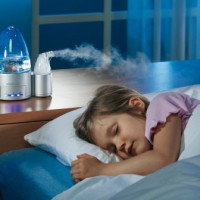 The effect of air humidity on human health: what dangers are too high or low humidity
The effect of air humidity on human health: what dangers are too high or low humidity  Warehouse and warehouse ventilation: standards, requirements, necessary equipment
Warehouse and warehouse ventilation: standards, requirements, necessary equipment 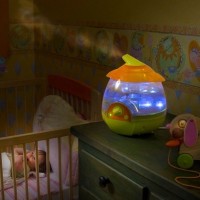 Temperature and humidity in rooms for children: normative indicators and methods for their normalization
Temperature and humidity in rooms for children: normative indicators and methods for their normalization 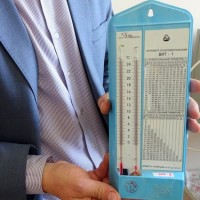 How to calculate humidity on a hygrometer: a manual for the use of devices + calculation examples
How to calculate humidity on a hygrometer: a manual for the use of devices + calculation examples 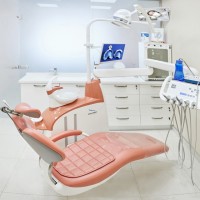 Air exchange in dentistry: norms and subtleties of arranging ventilation in a dental office
Air exchange in dentistry: norms and subtleties of arranging ventilation in a dental office  How much does it cost to connect gas to a private house: the price of organizing gas supply
How much does it cost to connect gas to a private house: the price of organizing gas supply  The best washing machines with dryer: model rating and customer tips
The best washing machines with dryer: model rating and customer tips  What is the color temperature of light and the nuances of choosing the temperature of the lamps to suit your needs
What is the color temperature of light and the nuances of choosing the temperature of the lamps to suit your needs  Replacement of a geyser in an apartment: replacement paperwork + basic norms and requirements
Replacement of a geyser in an apartment: replacement paperwork + basic norms and requirements